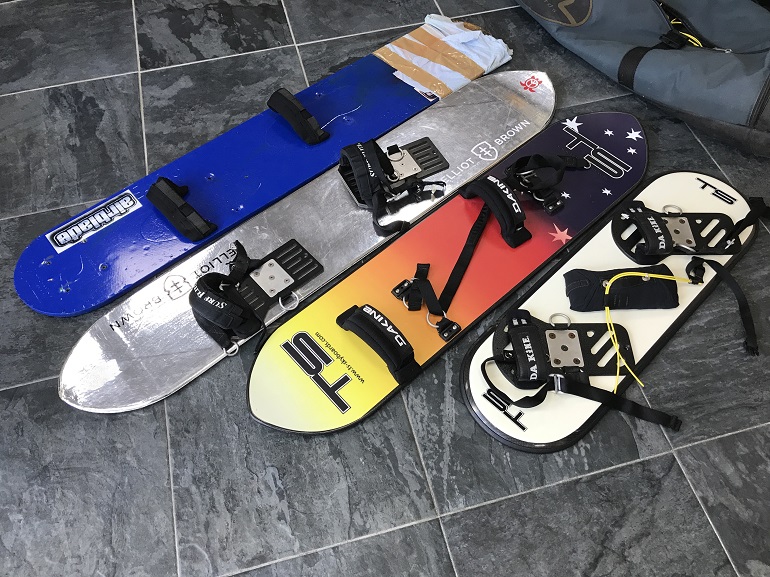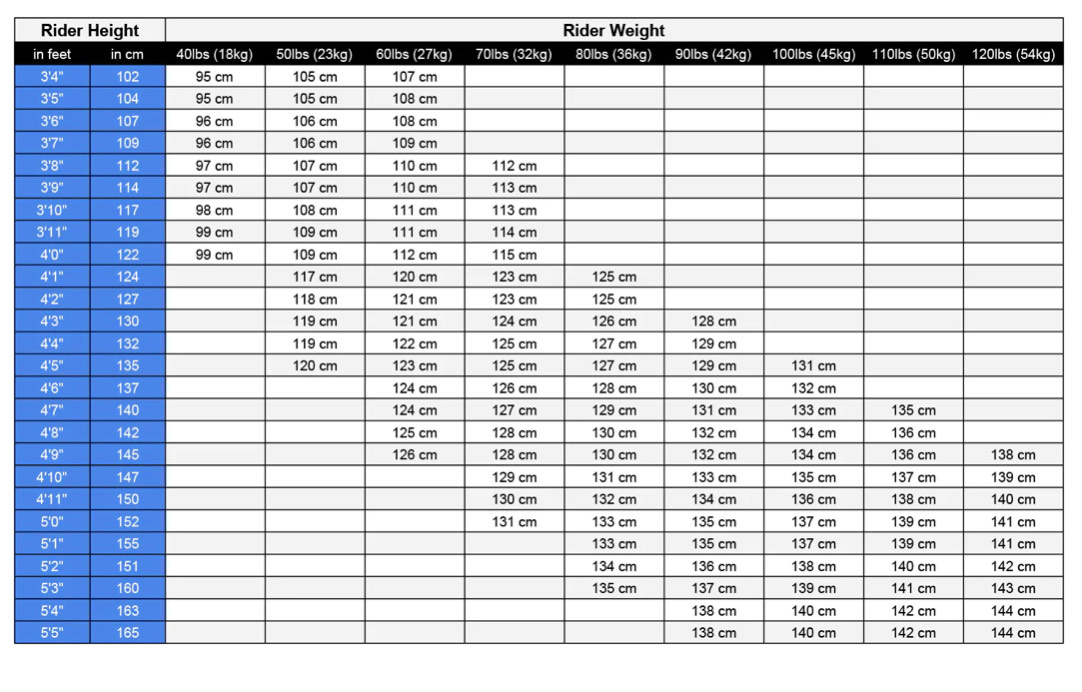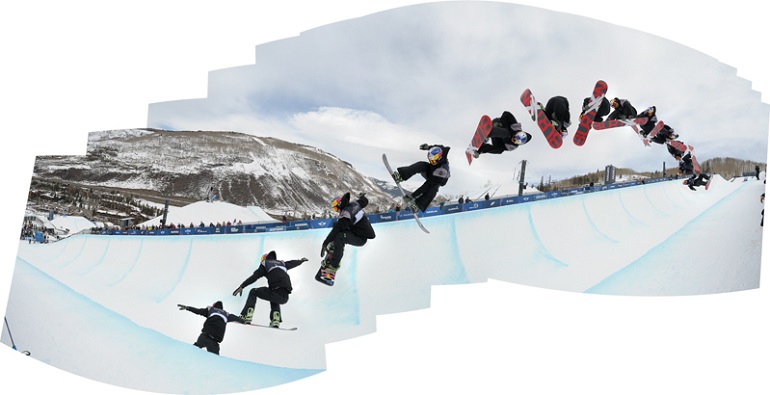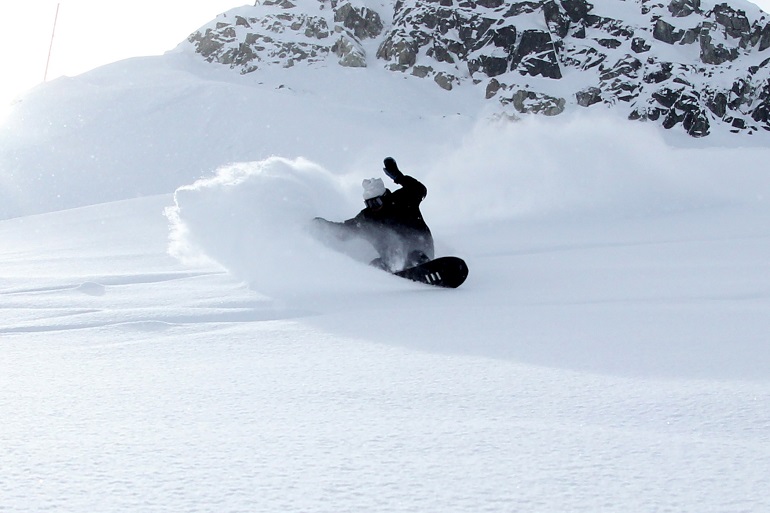Are you aching to get on the slopes but don’t know where to start when choosing the right snowboard? Don’t worry! We are here for you. Picking out a snowboard is all about the size, and we know that size matters.
Whether you’re into powder boards, freestyle boards, shorter boards, or directional boards, sizing matters. If your board is sized properly, you get more stability, effective edge, edge control, and higher speed, and get that much closer to being an advanced rider.
There are no limits to what you can do with the right snowboard. There’s been an evolving movement within the snowboarding community that dates back to the 70s. It’s the free-thinking ideas that get the blood pumping and have people becoming addicted to the sport.
I’m here to help you become the best-advanced rider you can be, whether you are starting out or just confused. I’ve been there and done that, and lived to tell about it. This is not about just grabbing any board off the shelf, it’s about your own personal preference.
Choosing the right board size isn’t about walking into your local Walmart and pulling one off the shelf. Many important factors help you choose the right snowboard with a dash of personal preference.
Whether you want freeride snowboards or an all-mountain freestyle board, it’s all personal preference. I’m here to guide you through the process so that you end up with a board that you’re not only comfortable with but that you love.

Simple Snowboard Sizing Explained
Height and weight are important factors in deciding on the size of your snowboard. Snowboard lengths are measured in centimeters from tip to tail. Snowboard weight is also a main key factor when choosing a snowboard.
Many people get a general idea of the size of the snowboard they need by standing the board up and comparing the height to their chin. In fact, I’m doing that right now. Just kidding, but I’m really just here to help.
You’ll know that the board is within your size range if the board length is between your chin and nose. Once upon a time, boards had the same profile and shape, so this was an easy way of measuring. Unfortunately, these days, your body weight plays a larger role in what size of snowboard you need.
Your weight and snowboard boot size will also determine if you need a wider board, as they come in different widths. Wider boards are typically used for people with large feet, such as a men’s 11. The all-around snowboard is measured at the narrowest point, in between the bindings, and they are measured in millimeters.
The type of riding you enjoy is also a factor because different board shapes are based on personal preference. You might want a larger board if you enjoy freeriding, carving, or powder. If you’re a beginner or enjoy the park or freestyle, you might like a shorter snowboard like a powder snowboard.
The following image gives you an idea of a basic snowboard sizing chart and how you can find a board best suited for you. Happy trails!

Factors Determine What Snowboard Size is Best For You
Snowboard length is simply the length from the ground to your chin. When you try this little snowboarding exercises, you might find that it ends up being the exact size you need, but that’s merely a coincidence.
Other things have to be taken into consideration. Various snowboard sizing calculators can give you some idea of what you’re working with.
So much technology over the years has changed the boards that the technique is obsolete. A few different factors come into play when choosing the right size of the snowboard. These are a few of the factors that are taken into consideration when choosing the right men’s or women’s snowboards.
- Height
- Snowboard Width
- Ability Level
- Weight
Snowboard Sizing by Height

These days height isn’t as important as weight, but it still plays a factor. This is because a taller rider would always weigh more than a short rider. Taller riders also have a wider stance typically than short riders, so they would be more suited for increased snowboard length.
If a tall rider ends up on a board that is too short for him, their stance width will be off, and they won’t be able to have their legs as wide as they want.
A shorter rider also doesn’t want a longboard as they might not be able to go as narrow as they want to or feel like they have too much board outside the inserts. Snowboard size is essential to having the type of snowboard experience you’re looking for.
After riding for a while, you will know the board that feels best for you; we always feel like it’s an extension of ourselves, and one day, you will feel that too.
Snowboard Width
When your snowboard width is sized correctly, your snowboard boots should hang over the edges of the snowboard slightly but not enough that you hit the snow when the board is on edge.
Having toes and heels slightly over the edges allows you to apply leverage and modulate pressure with your ankles. Wide boards are great for tall people who have a wider stance.
However, trust us, when it comes to your snowboard size, you don’t want your boots to extend too far over the edge, or they’ll hit the snow during hard turns, and you will find yourself rolling down the hill and having a yard sale.
If you’re looking to ride downhill at some point in your adventures, which everyone wants to do, you want to ensure you have the right type of board.

Rider Ability
Whether you are a beginner or an expert snowboarder, that also determines whether you choose a longer or shorter board. It’s not hard to figure out. As a beginner snowboarder, it’s always best to stick with a shorter board. You don’t have to consider length if you’re intermediate and above.
A longer board is more difficult to control, which is why board length based on ability level matters. It’s not a good idea for a beginner to use the same board length as an expert.
Rider Weight
Flex is a huge consideration when snowboards are designed—the weight of the rider influences that flex. If you are too light or heavy compared to the weight the board was designed for, the flex won’t work the way you want it to.
You will find that everything is off during your day riding, you will assume it’s you and your lack of skills when it’s really the fact that you chose the wrong board. That’s also why it’s always better to buy your own board rather than renting one.
You could buy a board and be told by the salesperson that it will perform a certain way and then find yourself on the mountain scratching your head, wondering why it’s not flexing properly.
If you are too heavy for the board, it will flex more than it should. You likely need a longer board. If you are too light for the board, you won’t be able to pressure down hard enough for the board to flex.
You must be within the proper weight range for the particular length of the new snowboard you want. Snowboard companies do release the weight range for each size of the board.

Snowboard Profile Shapes
There are many great snowboard shapes in the snowboard world today. Lucky for you! Most new snowboarders assume that all snowboards can work anywhere. But there are actually some snowboards that are designed specifically for certain snow conditions.
It’s time for you to choose the type of shape you want based on where you want to snowboard. Various shapes are designed to give you the best experience in specific conditions. We’ll walk you through the snowboard shapes and ensure you’re informed on each one.

Camber Profile
Snowboard size and shape are so important when finding the right board. This snowboard was one of our favorites for the longest time, and for a long time, it was one of the most common shapes until the late 2000s.
It performs well with a fast, stable poppy ride but is less forgiving than other shapes, so you should be on your game.
It takes a lot more work if you are in powder conditions. But that’s what a powder snowboard is for. A camber profile means the base of the board touches the snow near the tip and tail, rising in an arc between the bindings.
Camber profiles are designed to spread your weight and give you a stable ride. These boards are less likely to “wash out” when you’re carving, but there is also the likelihood that you will catch an edge.
Camber boards generally have more pop than a rocker board, but there are also camber and rocker combinations that might intrigue you.
Rocker Profile
The Rocker is the complete opposite of camber. It’s an arc that curves up from the center of the board. It’s called a Rocker because it resembles the floor rails of a vintage rocking chair.
The board’s contact space is below the rider, located close to the feet to keep you balanced. Some people have multiple boards depending on the different riding style that they enjoy.
Snowboard Flex
Snowboard flexes vary considerably depending on the board you have. Snowboard flex ratings are not always standardized in the snowboard world.
The medium flex, for example, might be different from other snowboard brands. The flex range goes between 1-10, which gages sift flex or stiffer flex. Flex ratings are classified as 1-2 as soft, 3-5 as a medium, 6-8 as stiff, and 9-10 as stiffer flex.

Softer Flex
All mountain and freestyle snowboards fall under a softer flex. They are easier to turn and typically more forgiving.
They are great for beginner snowboarders, park riders, and riders with lower body weights. They are looser at higher speeds but provide a soft buttery feel at slower speeds.
Stiffer Flex
These boards are more likely used for backcountry or freeride use. They have better edge hold and are very stable snowboards at high speeds.
A stiff board is a good idea if you enjoy a good high-speed turn, as we do. These boards tend to be tougher on lightweight riders to flex.
Flat Profile
A flat snowboard has no rocker or camber between the feet. A flat profile makes your snowboard predictable and stable.
Type of Riding
- These are great boards for beginners because they have a softer flex. Intermediate riders will choose the board because it’s easy to ride and helps them move to the next level.
- Park riders prefer flat boards because they are suitable for snowboard jibbing.
Directional Flat Snowboard
There is no camber or rocker between the feet, but it does have a rocker in the nose. In deep snow, the flat profile allowed the nose of the board to float and the board’s tail to drop down. This creates high stability in the deep snow.
Types of Riding
- Directional flat snowboards are great for freeriding and soft powder conditions.
- All-mountain riders enjoy these boards for resort days that have variable conditions.
Hybrid Profiles
Hybrid profiles give the best of all profiles in the snowboard world. It’s a mix of camber, flat, and rocker rolled into one epic board.
Snowboard companies have created many different combinations of this, but the most common is the hybrid camber (rocker/camber/rocker), hybrid rocker (camber, rocker, camber), and flat-to-rocker (rocker/flat/rocker).
Hybrid Camber
The rocker in the tip and tail is great for floating in powder, while the camber underfoot adds stability, speed, and pop. This is a good option if you’re looking for great turn initiation.
The length of the camber section varies, and so do the rocker sections. The difference between how pronounced the rocker and camber are depends on the board. The variations determine what kind of ride you’re going to get.
A snowboard with longer rocker sections is great for beginners. Hybrid rocker profiles are mostly highly pronounced camber which isn’t suitable for beginners.
Hybrid rockers can be directional by adding more camber to the tail and more rocker towards the nose. Freeride boards have directional hybrid camber.
Hybrid Rocker
The rocker between the feet gives it a looser feel and floats better in powder than the traditional camber. It allows for easier turn initiation and will land and butter generously. This profile is excellent for the mountain and park.
These boards have a looser feel than Hybrid Camber profiles because the rocker is between the feet. They are quick boards edge-to-edge, and there are directional hybrid rockers profiles too.

Wrapping It Up!
Now that you have figured out your length ranges, it’s time to start shopping for boards. Check out the following to find an excellent rider depending on the style that you’re looking for.
You can start comparing the width range and find a board suited for the way you like to ride and the terrain you desire. Now is the type to try out different styles if you desire, whether powder boards, freestyle boards, or shredding boards.
What’s Your Favorite Profile?
I’m always thrilled to hear about other riders’ adventures. Please feel free to comment below on the profiles you enjoy riding on. Tell me whether you’re now considering trying out other profiles.
0 Comments